|
||||||||||||||||||||||
Oltcit and AxelFor
more information on the Oltcit story (and other CitroŽns built outside
France), buy a copy of"CitroŽn Axel - La
Cousine de CraÔova" by Thijs van der Zanden or Gilles Colboc and
Jean FranÁois Ruchaud's book, "Les CitroŽn du monde" |
 |
||||||||||
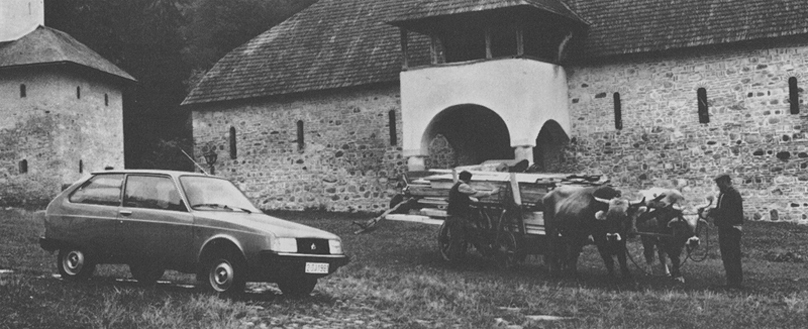 |
|||||||||||
|
The energy crisis of 1974 led to a drop in new car sales and CitroŽn, in common with other motor manufacturers, decided to investigate new markets. Ceausescu’s political independence from the Soviet Union and his protests against the invasion of Czechoslovakia in 1968 attracted the interest of Western powers, who believed him to be an anti-Soviet maverick, and they hoped to create a schism in the Warsaw Pact by funding him. Building a car there would give the company access to Comecon markets without the swingeing import taxes imposed on imports from outside Comecon. Further perceived advantages were the low labour rates in the country and Georges Taylor’s personal connections with senior officials in the Ceausescu government. The Romanians invited foreign motor manufacturers to participate in the technological and financial creation of a car factory. Three manufacturers expressed interest: CitroŽn, Renault and Volkswagen. CitroŽn proffered Projet TA, Renault offered their 12 and VW offered the yet-to-be launched Golf. VW dropped out, leaving the field to CitroŽn and Renault and in July 1976, after thirteen months of tortuous negotiations with the Romanian government, the CitroŽn-Romanian Agreement was signed, leading to the setting up of two automobile manufacturing enterprises in Romania. The partners in these ventures were the Romanian State and CitroŽn and the Romanian State and Renault and thus two new motor manufacturers came into existence. Dacia was the Renault venture, initially building the Renault 12 while the CitroŽn venture was called Oltcit – ‘Olt’ from the Romanian province of Oltenia and ‘Cit” from CitroŽn. The Romanian government took a 64% shareholding and CitroŽn the remaining 36% at a cost to the company of FF500,000,000. CitroŽn would supply the know-how and certain components that could not be sourced in Romania and agreed to take 40% of the production for export to France, Austria, the Netherlands, Belgium and Italy. For its part, Oltcit would sell the car in Romania, Comecon and Latin America. The Ceausescu regime insisted that 40% of all components be sourced in Romania since they were not prepared to spend hard currency on imported components. Furthermore, the regime was reluctant to allow hard currency profits on the venture to be exported to France and CitroŽn were therefore obliged to purchase other Romanian products in hard currency, which they could export and sell outside Romania. The agreement foresaw the production of an entire range of vehicles based on Projet TA – a five door saloon, an Entreprise light van and an estate together with future assembly of the yet-to-be launched BX and Peugeot 205. On 30th December 1976, CitroŽn and the Romanian state signed an agreement to build a 350,000 square metre factory in Craiova in southern Romania. CitroŽn undertook to hand over the keys of a fully operational factory in 1980. It was envisaged that the factory would employ 7,000 people and would initially produce 130,000 vehicles per year with a peak capacity of 300,000 vehicles. In the event, Romanian bureaucratic obstacles meant that the factory took longer than this to build and small-scale production did not start until October 1982 with something approaching full production only being achieved in 1983. Widespread inefficiency and corruption meant that production never approached that intended, totalling a mere 60,184 between 1984 and 1988. On its way from Projet TA to Romania, the car lost two of its doors (doors are expensive components to fabricate) although the two that remained were lengthened to improve access to the rear seats; the fuel filler migrated from the right to the left side of the vehicle; and the C-pillar was reduced in width. Ground clearance was increased to cope with the awful state of Romanian roads and modifications were made to the ignition and carburation to improve starting in the sub-zero temperatures that are all too common in the Romanian winters. The rear sub frame was also redesigned (the original eventually found its way into the Peugeot 205 and 405, CitroŽn BX, etc.) Three models were put on sale:
The 11 RL was rebadged as the CitroŽn Axel and sold in France, Austria, the Netherlands, Belgium and Italy. The Axel later acquired the 1299cc engine of the GSX3/GSA and improved trim and was sold in these markets as the CitroŽn Axel 12 TRS. The delay in getting the Axel into production meant it was already obsolete when launched and furthermore, it was in competition with its stablemates, the Visa, LN, LNA, Peugeot 104 and Talbot Samba. Poor quality control and assembly standards well below those expected in Western Europe meant that only a very aggressive pricing campaign could shift these vehicles. Citrovisie
was founded by Thijs
van der Zanden to combine his passion
for writing and CitroŽns. Citrovisie publishes books which will
interest all enthusiasts of the CitroŽn brand. |
|
||||||||||
|
|||||||||||
 |
 |
||||||||||
|
The Oltcit was probably the last design uninfluenced by Peugeot - suspension was by torsion bars as opposed to the MacPherson struts used in the LN and Visa. The dashboard was pure CitroŽn, featuring the PRN (Pluie, Route, Nuit - rain, road, night) satellites as fitted to the original Visa and the GSA (although on those cars, they were rotated through 90 degrees - the Oltcit featured the original configuration as proposed by Michel Harmand). |
|||||||||||
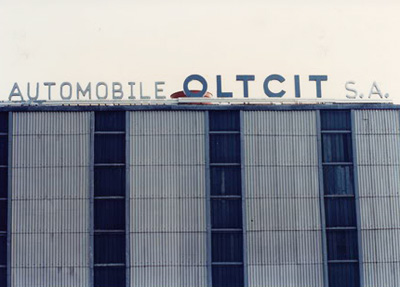 |
 |
||||||||||
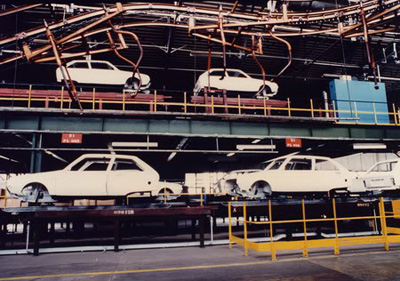 |
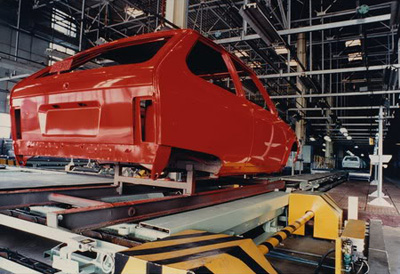 |
||||||||||
 |
 |
||||||||||
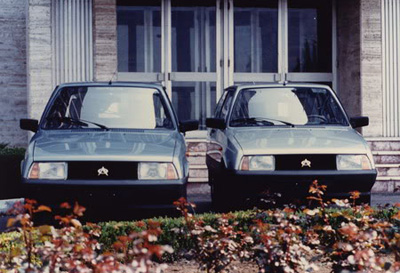 |
|||||||||||
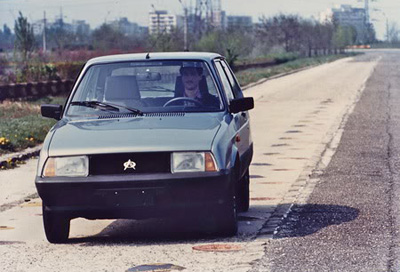 |
 |
||||||||||
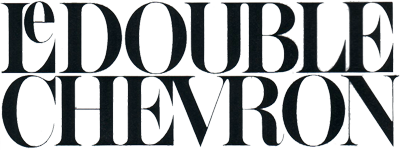 |
Le Double Chevron 46 dated winter 1976 reported the signing of the accord with the Romanian state as follows: |
||||||||||
|
|||||||||||
| © 1996-2006 Le Double Chevron/Julian Marsh/CitroŽnŽt/Gilles Colboc/Jean FranÁois Ruchaud/Thijs van der Zanden | |||||||||||